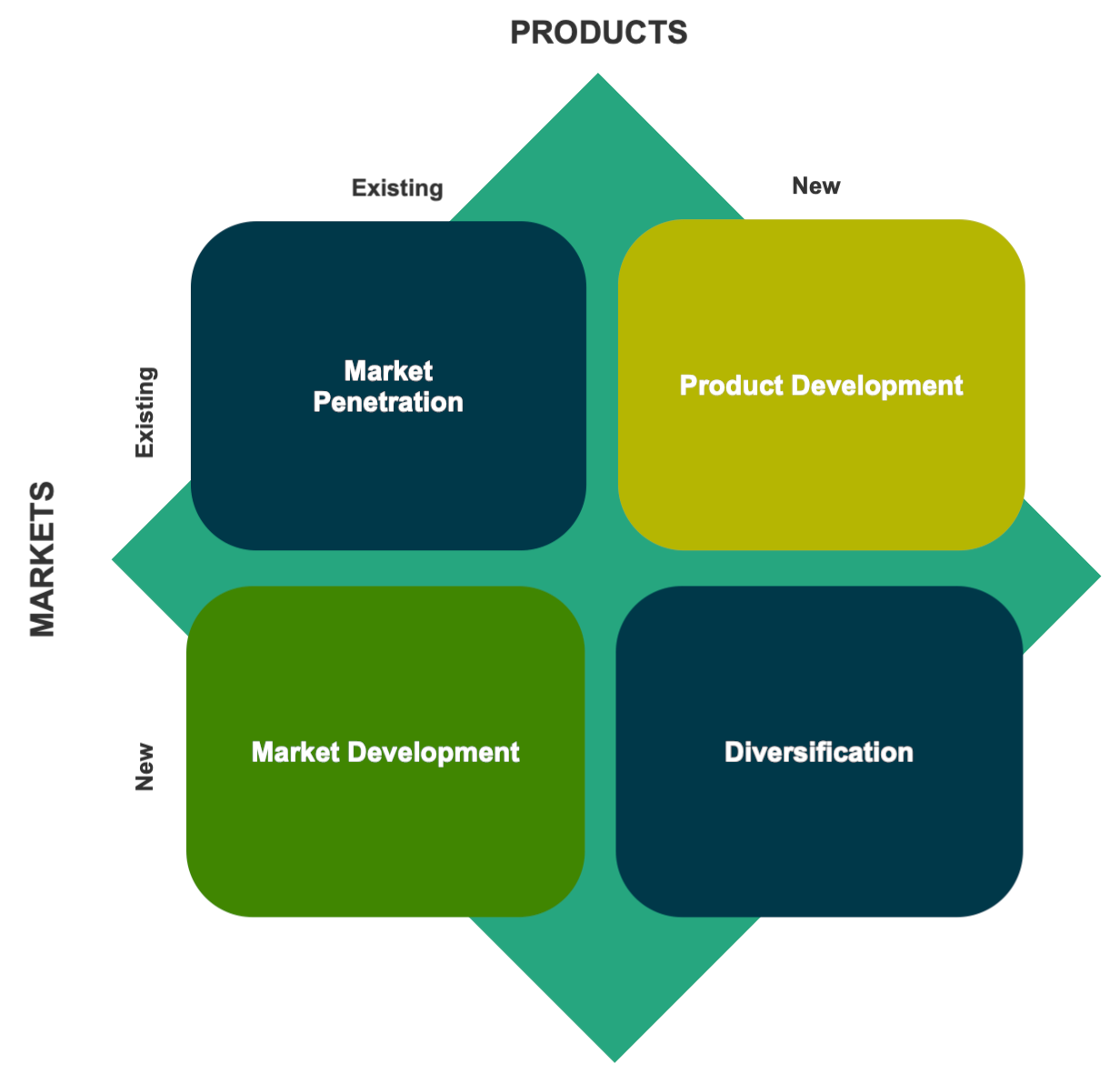As part of a larger strategic planning initiative, an Ansoff matrix is a communication tool which helps you see the possible growth strategies for your organization. The hard work is in selecting one of the four Ansoff growth strategies.
Market Penetration. The first quadrant in the Ansoff matrix is market penetration. It is often adopted as a strategy when the organization has an existing product with a known market and needs a growth strategy within that market. The best example of such a scenario is the telecom industry. Most telecom products exist in the market and must cater to that market. In such cases competition is intense. This means that in order to grow, the organization may have to go out of its way to increase market share.
Market Development. Market development is the second market growth strategy in the Ansoff matrix. This strategy is used when the firm targets a new market with existing products. There are several examples. These include leading footwear firms like Adidas, Nike and Reebok, which have entered international markets for expansion. These companies continue to expand their brands across new global markets. That's the perfect example of market development. For a smaller enterprise, this strategy entails expanding from a current market to another market where its product does not currently compete.
Product Development. Product development in the Ansoff matrix refers to firms which have a good market share in an existing market and therefore might need to introduce new products for expansion. Product development is needed when the company has a good customer base and knows that the market for its existing product has reached saturation. In this case, the market penetration strategy is no longer practical. A new product development strategy that caters to the existing market is a better approach.
Diversification. The diversification strategy in the Ansoff matrix applies when the product is completely new and is being introduced into a new market. An example of diversification is Samsung. It began as a trading company, later expanding into insurance, securities, and retail. Today, it is mostly known for its electronics division. This group initially started with one product - a black-and-white television set. It entered the telecom market in 1980 developing telephone switchboards, then later into telephones, fax machines, and mobile phones. Samsung now has a market presence in a diversified global set of businesses including semi-conductors, appliances, cameras, watch making, apparel, music services, cloud computing, and home automation.
Back to top
